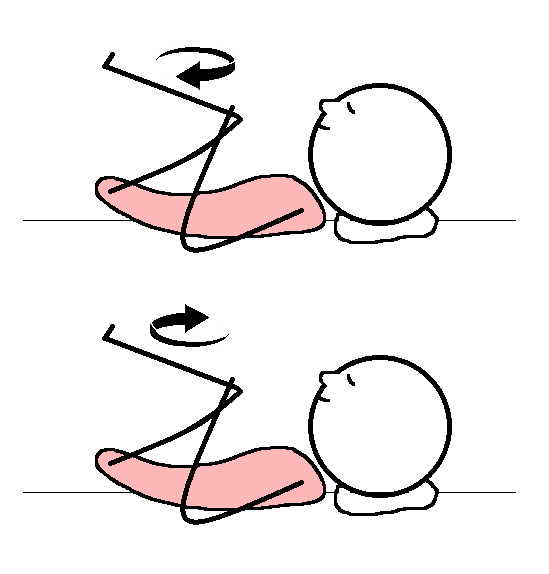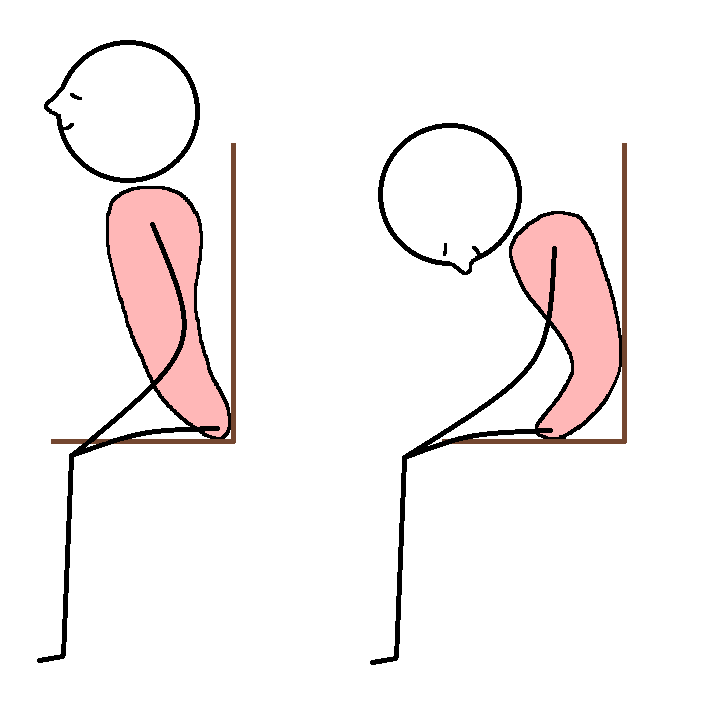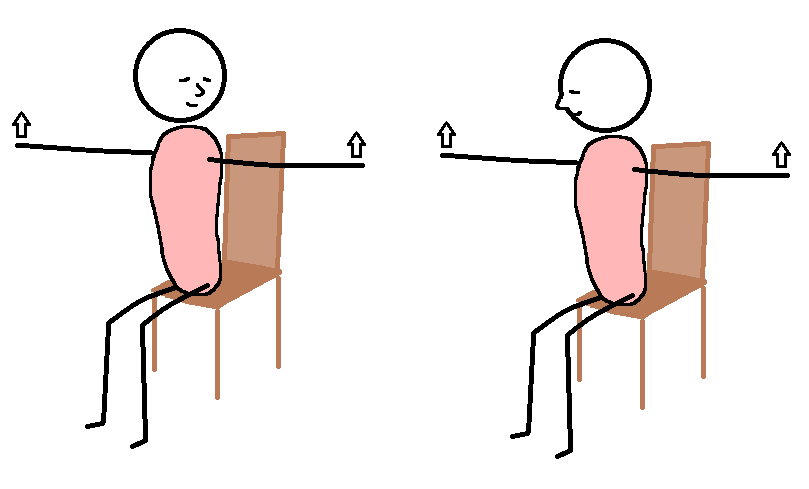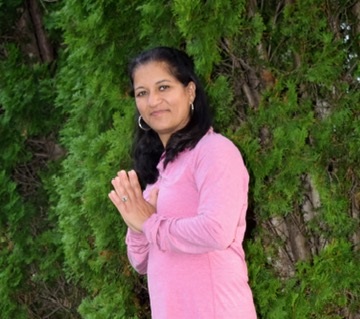Contribute
| Yoga For Arthritis |
Ritu Kapur
09/17/2020
Yoga For Arthritis Nearly 54 million adults in the US are affected by arthritis, based on 2019 statistics offered by the CDC. That’s approximately one in every four Americans, making it one of the most common chronic conditions. Arthritis can cause joint pain, swelling, stiffness and limited movement, and can therefore significantly limit your ability to perform your work and enjoy daily activities like walking, gardening, sports, dancing, or other favorite pursuits. Most Americans do not get enough physical activity, a factor that contributes to higher rates of obesity and health problems like arthritis. Yoga offers a beautiful way to exercise gently and mindfully that is enjoyable enough to do regularly. For the person with arthritis, yoga improves joint flexibility and range of motion, improves balance, increases oxygen to the muscles, builds muscle strength, and improves blood circulation to distant body parts. Yoga also creates a mind-body connection and decreases anxiety with the use of deep breathing, skills that can be used to significantly reduce mental and physical pain. Before starting a yoga regimen, it is important to talk to your yoga teacher about your limitations. Students (and teachers!) should be very aware of these limitations and safety concerns at all times during your yoga practice. In addition, discuss what type of modifications might be appropriate for your unique condition. Be mindful of any pain or discomfort you experience and avoid overtaxing any joint that is painful. You may consider taking one or more private classes with your teacher before going into a group class to be sure that all of your individual needs are recognized and addressed Many yoga teachers are now offering their classes via online platforms; the positive side of that is that all these experienced instructors have suddenly become very accessible to you. It does not matter where you live, you can work with them from the comfort of your own home. They can guide and you give you exact instructions in real time based on how you are doing. The negative side could be that if you a very social person and like to feel the energy of the teacher and the space, you may feel a bit distant. I would say, give the online classes a try and you may be pleasantly surprised. MOVEMENT “Use it or lose it†applies to arthritic joints as well. Too much rest or staying in one place can increase stiffness leading to loss of movement in the joints. MODERATION Rest and moderation of movement are crucial when you are dealing with arthritis of any joint in your body. MINDFULNESS Meditation can be your pillar of strength and can help you deal with symptoms of arthritis in a more peaceful way. Start with these four simple yoga poses that are easy to do and allow you to move multiple joints at the same time. Progress gradually to more advanced yoga poses when you feel ready. Modify the poses as needed by using blankets or small bolsters to make each pose completely comfortable. If you feel sharp pain while doing these movements, stop immediately, carefully read the directions again and try them later on another day. Be mindful about the difference between a good stretch and pain. Stretch should feel good and pain does not. SHOUDLERS AND NECK • Sit at the edge of chair with your spine straight. Stretch your arms by your side with the palms facing up. • As you inhale, look at your left hand, then slowly and gently turn your head as you exhale to look at your right hand. Do this 3-5 times, creating just the right amount of stretch in your neck and arms. • Slowly lower your arms and bring both hands behind your lower back to hold the hands together. As you inhale, open your chest and shoulders and look up towards the ceiling. As you exhale, gently bring your chin down towards your chest. Do this slowly and gently 3-5 times. NECK AND THE SPINE • Sit on the edge of a chair with no arms so you can widen your legs with your feet comfortably flat on the ground. Make sure the chair is sturdy and does not tilt forward. • Rest your hands on your knees, tilt forward a little and look ahead. Inhale and lengthen your whole spine and neck forward. • As you exhale, tuck your tailbone, round up your spine and bring the neck down as if you are trying to look towards your naval. Repeat this sequence of two movements 3-5 times in coordination with your breath. • On the last tucked-in position, let your arms hang by the side of your legs and let your head hang down towards the floor. Feel your neck lengthen as you create more space in your cervical spine. Gently and slowly move the neck side to side a few times. Starting at the base of the spine and raising the head last, slowly uncurl the spine back to an upright position sitting in the chair. Take a few deep breaths. KNEES, ANKLES AND FOOT • Sit in a chair with both feet comfortably resting on the ground. Pick up your right foot and place it on your left knee. If you are unable to bring the foot up due to any injuries or limitations, you can stretch the leg out in front of you and do some ankle movements. Move the ankle up/ down, sideways and in circles, about 5 times each way. You can do this with your knee straight or bent. • Take 5-10 long, deep breaths as you sit like this, stretching your hip and knee and ankle joint. • After some deep breaths, rub your foot with both hands, stretch your toes and move your ankle in a gentle circular motion with your hands. If you are unable to reach your foot comfortably, you can roll your foot on a soft ball like a tennis ball to massage the sole of your foot. • Repeat on the other side. HIPS AND SPINE • Find a carpeted space or use a yoga mat with a blanket on top and lie down on your back with your knees bent. Use a blanket for head support. Tuck your tailbone so you can feel your lower back resting on the ground. Feel your middle and upper back resting on the ground as well. Allow your shoulders to rest toward the ground. • Slowly bring both knees to your chest, wrap your hand around your knees like you are giving yourself a big hug. Gently rock side-to-side for 1-2 minutes massaging your spine on the ground. • Allow each hand to rest on its respective knee. Move both knees away from each other in opposite directions in a gentle small circular motion and then bring them back again. Repeat five times. As you get used to this motion you can make the circles a little wider. This is an excellent movement for hip joints to decrease tightness and increase range of motion. Notice how this feels in your lower back and your shoulder blades. • Lie down quietly for some more time with your knees bent or your legs straight on the ground. Simply take some time to listen to your breath or follow with some of your other favorite yoga poses. Ritu Kapur is an Occupational Therapist and a Yoga teacher. She is the owner of Sohum Yoga and Meditation. She offers weekly group classes and private yoga classes via Zoom. Visit www.sohum.org for more details. Email Ritu with any Q. related to this article or any of her online yoga classes at Ritu.Kapur@Sohum.org
The M and M’s of Yoga for Arthritis
You may also access this article through our web-site http://www.lokvani.com/



